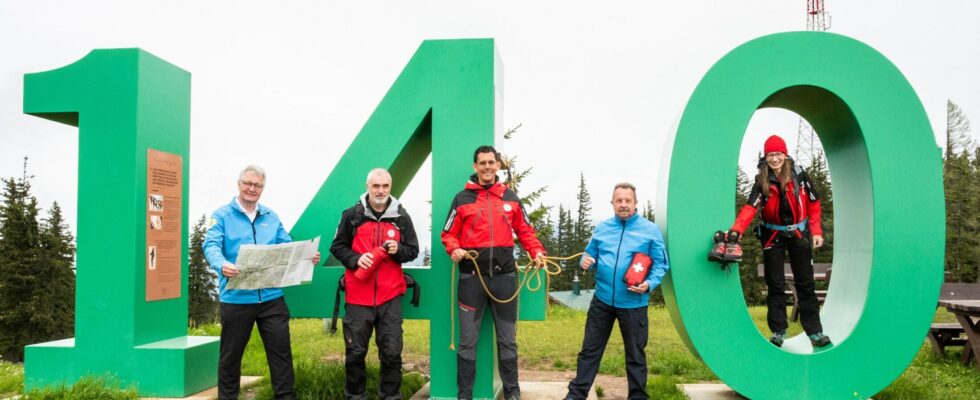The hiking season has already begun and is bringing with it an increased number of mountain rescue operations. Targeted prevention is now intended to reduce the number of avoidable operations.
A look out of the window: Hurray, the sun is shining! Get in the car, head out into the countryside and up the mountain! In shorts, without rain protection and with inadequate footwear and food. What sounds like a dream day trip under a bright blue sky can quickly turn into a nasty adventure with horrible weather in the mountains. Unfortunately, the Lower Austrian mountain rescue service is confronted with this problem all too often. Many operations due to insufficient equipment “One third of operations could be avoided if people had prepared better for their hike beforehand,” says Christoph Kainz, President of the Lower Austrian Civil Protection Association. In figures, that’s around 250 operations a year that could have been avoided. Be it through better equipment or more targeted preparation. Cernusca cites a recent operation on the Alpine Club trail on the Rax as an example. “People simply didn’t realize that there was still snow up there and then just couldn’t go any further.” What is important? First and foremost, the right preparation. What will the weather be like? Will I be able to manage the tour in terms of fitness? Do I have the right equipment? “Far too often, people call the alpine emergency number because they get into trouble without being well equipped,” says Christian Hofer, deputy local head of the Reichenau mountain rescue service, who knows this problem from his own experience. It is also particularly important to call 140 in good time in the event of a problem. Because the later it gets, the more difficult it is to deploy a helicopter. Preparation with a YouTube video The mountain rescuers criticize the ever-increasing “fully comprehensive insurance mentality” of day-trippers. “I have a cell phone and insurance anyway, and if something happens, someone will come and get me,” says Christoph Kainz. People also often lack the correct assessment of distances. “With a climb of five to six hours, you can’t leave until 3 p.m.,” continues Kainz. Many prepare for the tour with a YouTube video and forget to listen to the current weather report. “It would be much more important to observe the local weather situation and, best of all, to ask the locals or the hut owner,” Cernusca advises in conclusion. Tips for safe hiking in the mountains can be found at www.bergrettung-nw.at
source site-12
